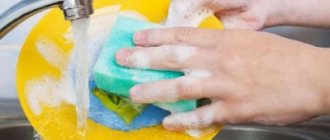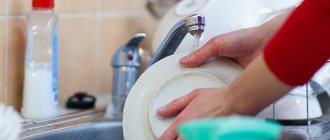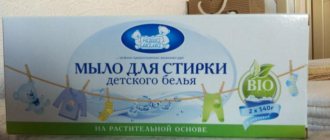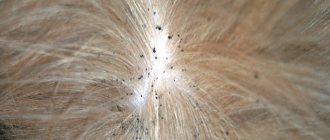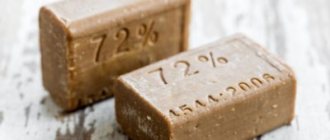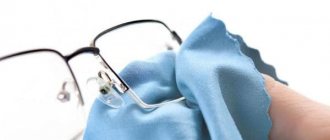Is it suitable for cats?
In addition to special shampoos intended for hair and skin care, there are drugs whose action is aimed at destroying parasites or fungus. Many cat owners refuse pharmaceutical products, preferring tar soap, because... this product has a number of useful properties.
When used correctly, this soap accelerates the process of cell regeneration and relieves irritation of the epidermis. It has anti-inflammatory and antibacterial effects. The smell of a hygiene product can repel parasites, which serves as a prevention of flea infestation.
But tar soap cannot be used regularly for the procedure either. The choice in favor of this product should be made if there is no special means for washing the animal at home.
Tar soap for fleas (for cats). Advantages
Why should you choose this product over aggressive chemicals? Tar soap:
- effective;
- environmentally friendly;
- safe;
- does not contain chemicals, dyes or fragrances;
- inexpensive.
Perhaps all of the listed advantages cover such a disadvantage as smell. Of course, tar soap will not smell of roses or jasmine. But this excellent remedy leaves no chance for parasites that have settled in the fur of your beloved cat. In addition, by removing fleas with tar soap, you can also treat wounds on the body.
Does it help remove fleas?
Soap containing birch tar does not provide a 100% guarantee of killing parasites. The product will only be effective under certain conditions. For example, if a cat has been in contact with another animal that has fleas, then preventive treatment is required immediately after a walk.
It is necessary to bathe the pet. If he was infected, then 1 procedure will be enough. Parasites can be washed or combed out. Benzene, which is contained in tar, is a toxin for insects. It affects the nerve centers of fleas. Therefore, the parasites become lethargic (sedentary).
If a cat has a severe flea infestation, then several treatments will be required to treat head lice. The animal must be soaped and wait 5 minutes. During this time, some of the fleas will leave the fur on their own (will end up in the water), while others will become inactive. The remaining parasites are combed out.
But soap only has a negative effect on adults, and not on their eggs. Therefore, it will be necessary to re-treat in a few days when the nits hatch.
Which soap is better, liquid or solid?
You can wash your cat with tar soap without any worries. Both traditional bars and a liquid equivalent are used. Each type has its own characteristics. Hard soap foams worse, but has a more natural composition. Liquid detergent forms a thick foam, but contains synthetic additives that negatively affect the condition of the skin.
Liquid
Is it effective against lichen?
Tar reduces the activity of bacterial and fungal microflora, so soap containing this element can be used to treat lichen in cats. To cure an animal, apply foam to the affected area and leave for 15 minutes.
You can also make pasta. You will need to rub the bar, fill it with warm water, and then wait until the crushed particles are completely dissolved. You should get a homogeneous mass. It is applied daily to the lichen, and after 15-20 minutes it is washed off with water.
Features of soap with tar
The use of this detergent leads to a reduction in the colony of parasites in the animal’s fur, improves the condition of the skin, relieves itching and heals wounds. These properties are manifested thanks to the components of tar soap, namely:
- Birch tar. A natural insecticide to which many insects are sensitive. The substance has antiseptic properties, inhibits the growth of many fungi and destroys bacteria.
- Phenol. Effectively fights parasites, causing them burns even through the chitinous shell.
- Sodium salts are indispensable for maintaining the alkaline balance of pets' skin.
If you need to decide what is the best way to remove fleas from a cat, you should pay attention to tar soap. This product is an excellent antiseptic that gently and painlessly heals small wounds, relieves inflammation and itching from bites, and helps cure an animal of fungal diseases. An excellent result can be achieved with complex treatment, that is, after bathing, use synthetic preparations with insecticides that will strengthen the anti-flea effect.
Sulfur-tar ointment
For a dermatological disease, a veterinarian may recommend sulfur-tar ointment. In addition to tar, it contains substances that will help speed up the process of treating lichen (turpentine, lanolin, sulfur, zinc oxide, salicylic acid, Lysol and petroleum jelly).
Before use, the cat’s hair is not cut. The ointment is applied to the affected area, and also treated 2-3 cm beyond the contour of the lichen (around). Forcibly, i.e. You cannot remove the crusts yourself. The site of infection is treated 1-2 times a day.
In most cases, a positive result is observed on the 7-10th day of treatment. The crusts begin to separate, and the hairline is restored (grows).
Why does tar soap repel insects?
Owners of furry creatures, encountering bloodsuckers for the first time, are wondering about the advisability of tar soap. Over the past two decades, veterinary science has made great progress. However, a simple drug is still used to this day in solving the flea problem and helps well.
The main element is birch tar. A viscous, sharp-smelling liquid with an oily black consistency. It is released when birch bark is steamed in special boilers. Gives the detergent a specific odor that is intolerable to fleas.
By repelling bloodsuckers, tar fights skin diseases, bacteria, and fungus. Improves the condition of the epidermis and coat, heals superficial abrasions and scratches. In addition to the listed areas, it is used in the treatment of sore throat, osteoporosis, respiratory tract, benign and malignant tumors.
Tar soap is available in solid and liquid versions. In addition to tar, the composition includes sodium salts, citric acid, and auxiliary substances.
Tar soap is available in solid and liquid versions
Harm and contraindications
Soap containing tar is considered a fairly safe product, but also has contraindications. It is not recommended for washing kittens that are not yet 6 weeks old. You should refrain from using the hygiene product if the cat has an individual intolerance to tar or other components included in its composition.
Soap can be harmful to your cat if the foam gets into your cat's eyes. It will cause pain. To eliminate the irritating factor, the animal's eyes are washed with clean water. If soap gets into the mouth or digestive tract, your pet may experience symptoms of stomach upset. Sometimes he can be lethargic.
If an animal has eaten a lot of soap, then it shows signs of poisoning. In such a situation, you need to take the cat to the veterinarian. Gastric lavage may be required.
Frequent use of soap can cause dermatological problems. Despite the antiseptic, wound-healing effect, the hygiene product dries out the skin. Therefore, with frequent bathing, the cat may experience irritation from drying out of the epidermis.
Precautionary measures
When using insecticidal tar soap, the owner of a cat or dog observes the following precautions:
- make sure that flea soap does not accidentally get into the eyes of a cat or dog;
- treats an infected pet only in the bathroom, without closing the door to this room;
- Do not wash your pet again if it has an allergy to a particular flea soap. In such a situation, the owner of the cat or dog, together with the veterinarian, selects another means to remove such parasites.
It is better for allergy sufferers not to carry out such treatment on their cats and dogs themselves, but to entrust this matter to their relatives or use tar soap for animals without a specific unpleasant aroma.
Failure to comply with such rules leads to the formation of severe allergies.
Shampoo
Tar shampoo intended for animals can be purchased at a veterinary pharmacy, pet store or supermarket, i.e. the product is publicly available. This product is often marketed as a flea and tick product. You can choose from:
- Celandine;
- Magic pet;
- Doctor;
- Luxury;
- Degtyarny (Nevskaya cosmetics);
- Home doctor.
The difference between shampoo and soap may be in the composition, but not always. Additional substances, such as dyes or fragrances, are often added to the first product. Not all of them are safe for the animal, because... may cause an allergic reaction.
When choosing between soap and shampoo, you should carefully study the composition. If the cat does not have individual intolerance to the components, then you can use any form of release.
Many owners prefer to use shampoo because... it's easier to apply.
Methods of application
When a pet is infested with blood-sucking insects, every owner is concerned with the question of how to help the cat get rid of fleas. Before you start using soap with tar, you need to prepare a soap solution.
To treat an animal, you should thoroughly moisten the fur, pour it with a soap solution and intensively foam the composition on the hair. All hard-to-reach areas should be carefully treated, using massaging movements so that the tar composition gets onto the pet’s skin. The greatest effect can be achieved if the composition is allowed to remain on the animal’s body for a certain time.
The soap should be rinsed off with warm running water several times to thoroughly remove any remaining product from the pet’s fur and skin. After drying, the coat should be thoroughly combed using a fine-toothed comb or dense bristles.
When it comes to the question of how to remove fleas from a domestic cat, the owners' reviews of tar soap are only positive, although the procedure for treating the animal itself causes a lot of trouble. In addition, it is important to follow some safety rules so as not to harm the animal:
- It should be remembered that this product can cause irritation to the mucous membranes and eyes, so it is necessary to constantly monitor the animal while bathing.
- Some components of the product may cause individual intolerance. If negative reactions to the active substances occur, you should immediately stop using preparations with tar.
To exclude the occurrence of allergic reactions, it is worth conducting a sensitivity test. To do this, a small amount of tar soap solution should be applied to a small area of the animal’s skin and left for a while. The absence of redness on the skin and the pet’s calm behavior will indicate that the solution with tar can be safely used.
How to wash?
The cat can be bathed 2 times a month. Water procedures should be abandoned if the animal:
- pregnant;
- sick;
- was recently vaccinated.
If the pet has just eaten, then it is better to postpone bathing for 2-3 hours.
To make the cat feel comfortable during water procedures, preference should be given to a small bath. You need to lay a rug on its bottom. It will prevent the animal's paws from slipping. Water is drawn up to the level of the pet’s chest. It should be warm, not exceed +38°C.
The cat is lowered into the prepared bath. It is not recommended to collect water while the animal is inside. This bathing option is suitable for pets who love such procedures.
The animal's fur is well moistened with water and then soaped. Shampoo or soap containing tar is immediately applied to the coat. There is no need to pre-dilute the detergent in water. It is not recommended to wet or soap your hair.
For the product to work, it must be left on the fur for 5-10 minutes. When the time is up, the animal is rinsed with clean water. The foam is washed thoroughly. It should not remain on the fur, because... may get on the mucous membrane.
When the water procedure is completed, the cat is wrapped in a dry towel and taken to a warm room. Additionally, you can turn on the heater to prevent your pet from freezing. You should not let the animal out of the warm room until it is dry. Otherwise, there is a risk that the cat will get sick.
Comparative characteristics
Many pet owners have 1 of 2 types of soap in their home - laundry or tar. Fleas Ctenocephalides canis or Ctenocephalides felis are also well killed by such products as dust and green soap.
Such insecticidal products are also inexpensive, have various beneficial properties and instantly destroy various parasites on dog or cat fur.
What soap should you use to wash your dog or cat? A detailed answer to this question is given below.
Degtyarnoe
Tar soap is considered a cosmetic cleanser, which is most often used when fighting cat or dog fleas (Ctenocephalides felis or Ctenocephalides canis). This product repels dog and cat fleas with its disgusting, pungent odor.
Tar soap has the following advantages:
- is a product made from natural raw materials, which is filled with birch tar;
- disinfects and also calms the animal;
- has low cost.
Economic
Laundry soap quickly cleans surfaces from various dirty stains and also destroys various microbes.
Such an insecticidal agent has the following advantages:
- is an environmentally friendly and hypoallergenic product;
- has a high alkaline balance;
- quickly destroys various microbes;
- has a low price.
Is it possible to completely remove Ctenocephalides canis or Ctenocephalides felis fleas using this product? No, because flea soap does not kill these parasites in cats or dogs at all, but only scares them away.
As a result, after using such a product, small pests leave the pet’s body and begin to jump around the bathroom or on clothes. In this case, they must be killed quickly before they spread throughout the apartment.
Dustovoe
Dust soap quickly and permanently destroys lice, various fleas or other similar insects. If laundry or tar soap is used at least 2 times, then it is enough to use dust soap 1 time to get the desired result.
However, doctors prohibit a person from frequently using such an insecticidal agent, because it gradually accumulates in the body of a cat, dog or person, which leads to its intoxication.
Will tar soap help against fleas? Yes.
The effectiveness of the product in the fight against fleas Ctenocephalides canis and Ctenocephalides felis is as follows:
- with a single use, it quickly calms the animal;
- damages the shells of flea eggs and then kills them;
- has a low cost.
At the same time, such a tool has several of the following disadvantages:
- very toxic;
- when accumulated in a human or animal body, it seriously disrupts the functioning of various organs;
- dangerous for children (both human and animal).
Green
Green soap for fleas Ctenocephalides canis and Ctenocephalides felis is an insecticidal preparation that is safe for humans and plants and effectively destroys these pests.
Such a tool has the following advantages:
- is an independent preparation that is used together with specific other insecticides, various bactericides or fungicides;
- does not harm the health of animals or humans;
- forms a film on the skin of 1 flea that blocks the flow of oxygen into the body of this parasite, as well as into its larvae and eggs.
Reviews
Svetlana Vasilievna, 46 years old, Moscow:
“At the dacha, the cat picked up shingles somewhere. Due to the lack of opportunity to go to the city, i.e. to a veterinary pharmacy, I had to turn to traditional medicine methods. Apply tar soap foam to the affected area, rub in, and then wash off.
Additionally, after each soaping, I treated it with iodine. In this way, we managed to cure lichen in a week.”
Ivan Markovich, 77 years old, Novosibirsk:
“There were always cats at home, 2-3 each. Therefore, I had to deal with the problem of fleas more than once. When signs of parasites were noticed in one of the pets, everyone was immediately bathed with tar soap.
Now there is one cat living at home, which has access to the street. I also bathe her periodically with tar, but this time with shampoo, because... it is more convenient to use. A positive result is always visible after 1-2 procedures.”
Marina Sergeevna, veterinarian, Petro.
Preventing the reappearance of fleas
After the fleas have been removed, measures must be taken to prevent them from appearing again. To protect your cat, you can sometimes bathe it with tar soap for prevention. You should also regularly clean your living space with soapy water. The fleas living in the apartment will not disappear immediately, but regular use of the product will remove them.
In the home, fleas most often live in upholstered furniture, under carpets, in crevices, and also in favorite places of pets
To prepare the solution, you need to dissolve tar soap in warm water - the more, the better. You can take a bar for a standard ten-liter bucket. Thoroughly wash the floors with the resulting mixture, paying special attention to the likely habitats of fleas:
- carpets;
- pets’ favorite resting places, their beds;
- sofas and armchairs;
- cracks in the floor, baseboards;
- place near the door (fleas often enter the house from the street or stairwell).
If asthmatics, allergy sufferers, pregnant women and children live in the house, it is better for them to leave the room before the treatment is completed, as the strong smell of the product can make them feel unwell. After washing the floor, you can ventilate the apartment. Tar itself is non-toxic, so if residents are not sensitive to its smell, it is not necessary to ventilate.
For anti-flea treatment at home, you can use a solution of concentrated birch tar.
What to replace it with?
For bathing adults and kittens, it is better to use special products that are intended for animals. When making them, the pH of the pet's skin is taken into account. When choosing a hygiene product, you should always look at the manufacturer’s information about the age at which a cat can be bathed and any contraindications.
If you don’t have tar shampoo or soap at home, and you can’t purchase a special veterinary remedy, dust soap is a good remedy for parasites and skin diseases. This product allows you to destroy not only fleas, but also their eggs.
Tar shampoo, like soap, has a repulsive odor. It is unpleasant not only to insects, humans, but also to the cat itself. For this reason, you should not keep the animal lathered with this composition for a long time.
After bathing, you should not try to mask the smell of soap with another product, such as perfume. For your pet, this aroma will also be unpleasant and irritating. It is necessary to allow the cat to tidy up its fur on its own (by licking).
Can tar soap be used to fight fleas?
Pet stores and hypermarkets are overflowing with various modern drugs for parasites. But they are not always harmless for pets and people; their use can lead to unexpected allergic reactions, which are sometimes not even listed among the contraindications for use in the leaflets for the drugs. Not all products can be used on puppies and kittens, but the soap can be used as early as the fifth week of life for small kittens and dogs, and even for pregnant and lactating animals.
Tar soap is not as effective in killing fleas as modern drugs, but unlike them, it does not have any side effects that ruin life and require additional funds for treatment.
Composition, effectiveness and beneficial properties
The drug contains the following ingredients:
- Birch tar. Natural antiseptic. Helps destroy pathogenic organisms and fungi. No insects can tolerate this smell and die from exposure to tar.
- Sodium salts. They normalize the water balance of the skin and help in the treatment of dermatitis.
- Phenol, cresol, acids and alkalis. They “burn out” the parasites and do not give them any chance of survival.
The content of birch tar in soap is no more than 10%. Even through the packaging you can smell the strong smell of soap. The aroma of tar is safe for humans.
Additional properties and distinctive features of the tar preparation:
- Brown color;
- dries hair and fur;
- helps with seborrhea and scabies, soothe itching and relieve inflammation;
- has a wound-healing and antibacterial effect;
- does not foam well;
- relieves itching after insect bites.
The low price determines the popularity of the drug, and one piece is enough for several baths for a medium-sized animal. This product can be used as an alternative to expensive synthetic insecticides. If the animal has too many parasites, you can use special anti-flea preparations along with soap.
Advantages and disadvantages
The folk remedy has a number of advantages. The main ones are:
- safety for the animal;
- gentle action – helps destroy bloodsuckers in pregnant cats and kittens;
- low price;
- possibility of use without long breaks;
- improving wool quality.
Tar soap against fleas also has disadvantages that cannot be ignored. These included:
- a sharp unpleasant odor that remains on the wool for a long time;
- possible allergic reactions;
- overdrying of the skin;
- the need for repeated treatments;
- possible difficulties with washing the animal (cats do not like water treatments).
You should not use tar soap often, especially for animals without hair or with a thin undercoat without guard hair - Sphynxes, Levkoys, Peterbalds. The skin of such cats after flea treatment needs careful care, including the use of moisturizing shampoos and nourishing oils.
Anti-parasite application for dogs
Bathing dogs is much easier - they love water treatments. You can do this without an assistant.
Rules for bathing dogs with soap:
- Prepare a soap solution.
- Treat animal fur.
- Rub the substance into the skin.
- Leave the product on for 10 minutes.
- Rinse thoroughly with warm water.
- Dry with a towel.
When bathing a large dog, use enough water. Typically, water treatments for dogs take a little longer because 2-3 treatments are required.
Rules for processing premises
When destroying fleas from an animal, you need to do this in the room itself. If parasites were found on a pet, then they have already managed to hide in secluded places in the home. It is very difficult to catch these small insects, so careful treatment of the room is required.
Rules for processing the premises:
- Wear gloves and a respirator.
- Move furniture away from wallpaper and baseboards.
- Make a warm soap solution with thick foam.
- Apply the resulting mixture liberally to baseboards, door and window frames, window sills, radiators and openings.
- Leave the solution for 10 minutes.
- Rinse off the substance with warm water.
- Ventilate the room and do not enter the room until the smell disappears.
Attention! To achieve maximum effect, use thick soapy dust foam. Wallpaper can also be treated, but you need to wash off any remaining soap with a slightly damp cloth.
After treating the room, you can add a couple of drops of lavender oil to the aroma lamp. This will help further protect the room from fleas.
Pregnant women are not recommended to be present while the premises are being treated with soapy water to avoid chemical poisoning.


